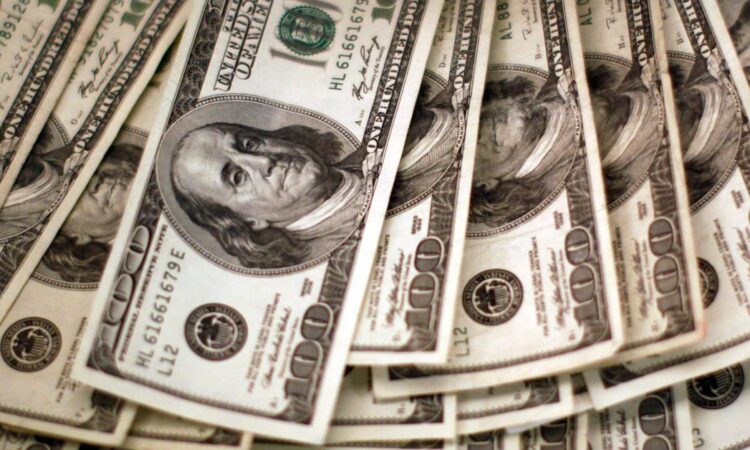
[1/3]Four thousand U.S. dollars are counted out by a banker counting currency at a bank in Westminster, Colorado November 3, 2009. REUTERS/Rick Wilking/File Photo Acquire Licensing Rights
NEW YORK, Oct 5 (Reuters) – The dollar retreated on Thursday, tracking the pullback in Treasury yields and providing much-needed relief for the yen and euro, ahead of the release of a key U.S. nonfarm payrolls report that could help determine whether the Federal Reserve raises interest rates again next month.
James McCann, deputy chief economist at abrdn in Boston, said there was some “degree of consolidation” in the dollar’s pullback after recent sharp gains.
“Certainly, the dollar from a longer-term perspective does look a little bit expensive. When you get to those (high) levels, there’s potential for people to take profits on certain trades. It’s the same with Treasury yields. There’s a little bit of consolidation there,” he added.
After touching an 11-month high earlier this week, the dollar index , which tracks the greenback’s value against six other currencies led by the euro and yen, fell 0.4% to 106.34, as investors turned their attention to the release on Friday of the U.S. Labor Department’s jobs report for September.
Economists in a Reuters poll forecast a gain of 170,000 jobs, down from 187,000 in the prior month. The unemployment rate is expected to have dipped to 3.7% from 3.8%. Data on Wednesday showed U.S. private payrolls increased far less than expected last month.
Although analysts said more evidence was needed to assess how fast the U.S. labor market is cooling, money markets have priced in an 80% chance the Fed will keep its benchmark overnight interest rate steady, according to the CME’s FedWatch tool. A month ago, those odds were at 55%.
Longer-dated U.S. Treasury yields moved further away from 16-year highs, while the yen , which tends to be sensitive to U.S. yields, traded at 148.39 per U.S. dollar, up 0.5%. It hit 150.165 on Tuesday, its weakest level since October 2022.
“The fall in yields doesn’t change the trajectory of what we have been going through in the currency market,” Amo Sahota, director at consulting firm Klarity FX in San Francisco, said.
“I think we have to see a much more significant decline in U.S. yields to really curb some of that dollar intensity.”
The euro rose 0.4% to $1.0551, having fallen on Tuesday to $1.0448, the lowest this year.
European Central Bank policymaker Peter Kazimir said the ECB’s rate hike last month was likely the last in its current tightening cycle, though the central bank would have to wait for more data before making such a determination.
INTERVENTION WATCH
The yen’s sharp recovery after breaching the 150-per-dollar level sparked speculation earlier this week of intervention to support the currency, but Bank of Japan money market data indicated on Thursday that Japanese authorities most likely didn’t intervene.
Japan’s Finance Minister Shunichi Suzuki on Wednesday declined to comment on whether Tokyo had stepped in, and repeated that currency rates must move in a stable manner, reflecting fundamentals.
Besides lower U.S. Treasury yields, the yen also drew support from a drop in oil prices, though markets expect the relief to be short-lived.
UniCredit strategists said the risks of Japanese intervention continue to linger given current yen levels.
Sterling climbed 0.5% against the dollar to $1.2190, after falling on Wednesday to its weakest since March.
Bank of England Deputy Governor Ben Broadbent said it was an open question whether interest rates needed to increase further.
========================================================
Currency bid prices at 3:06PM (1906 GMT)
Reporting by Gertrude Chavez-Dreyfuss; Additional reporting by Joice Alves in London; Editing by Mark Potter, Kirsten Donovan, Paul Simao and Andrew Heavens
Our Standards: The Thomson Reuters Trust Principles.



